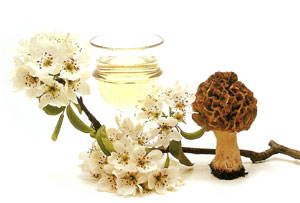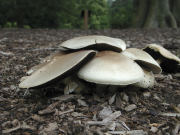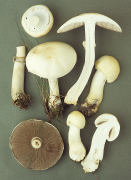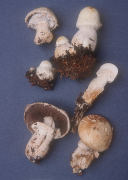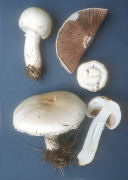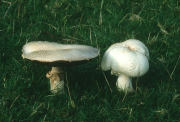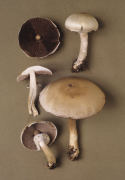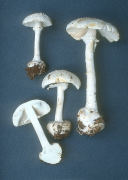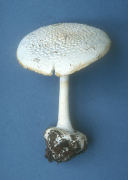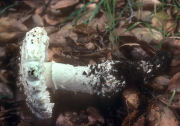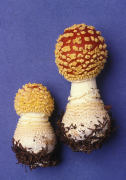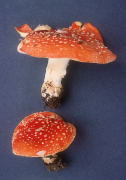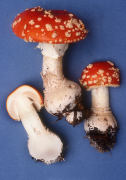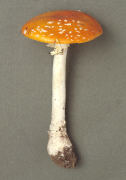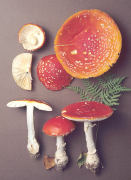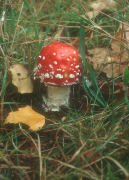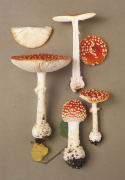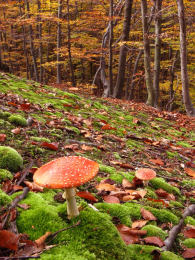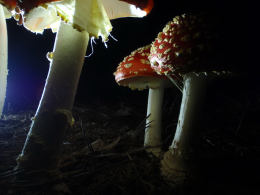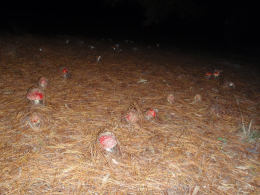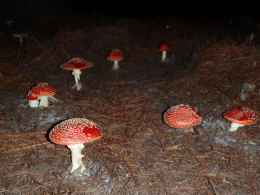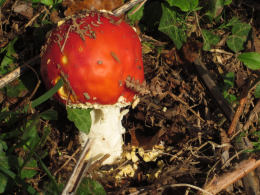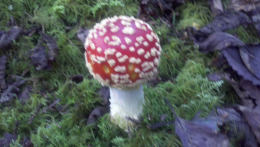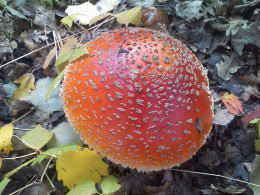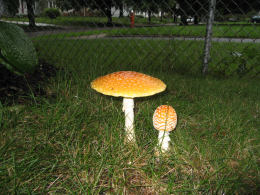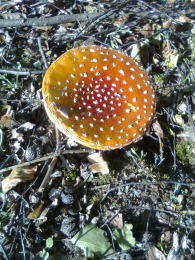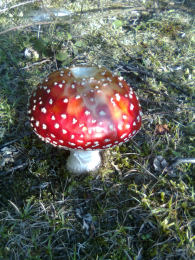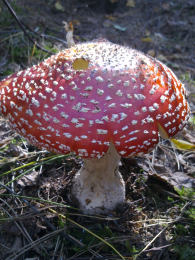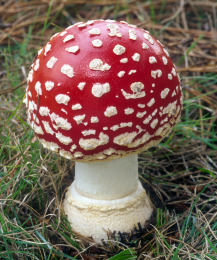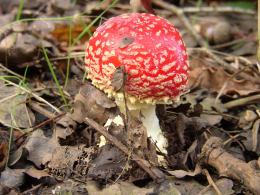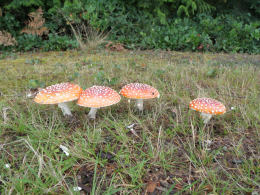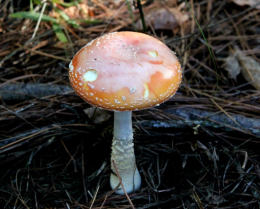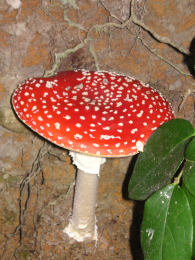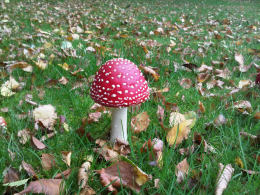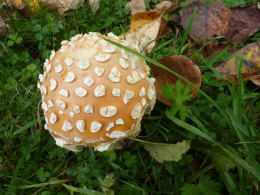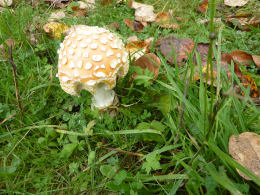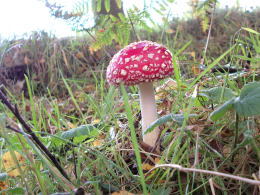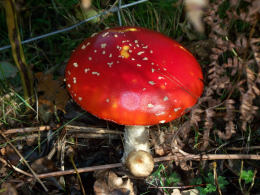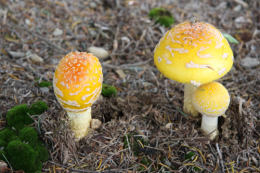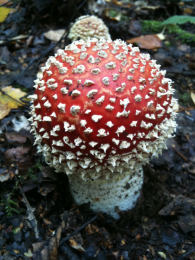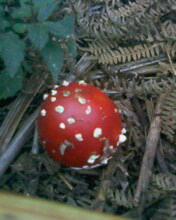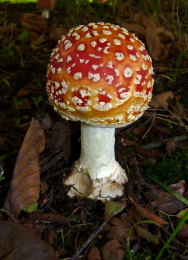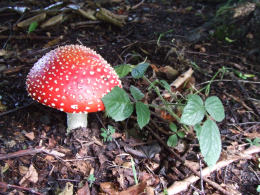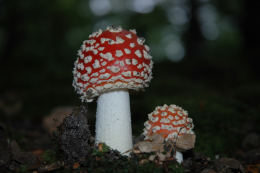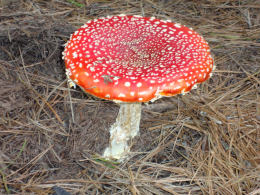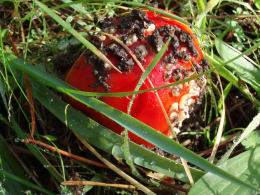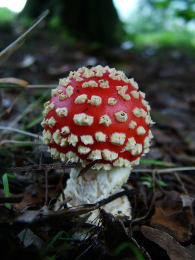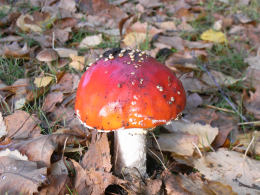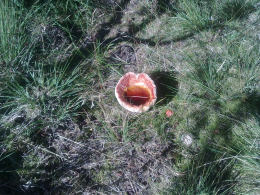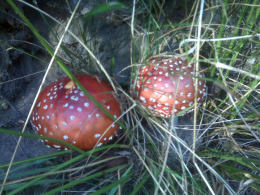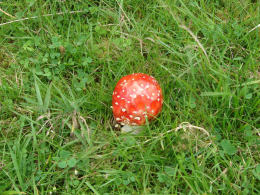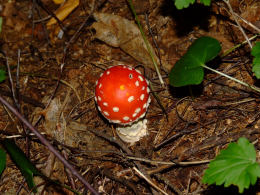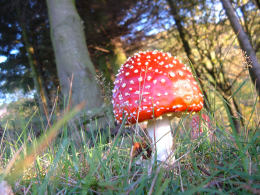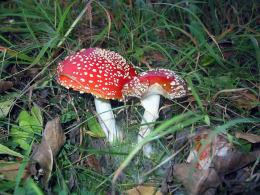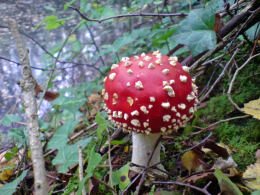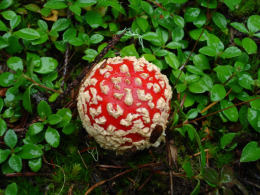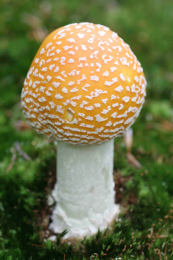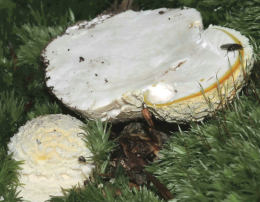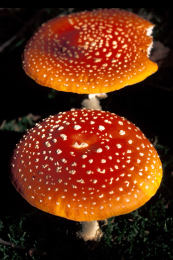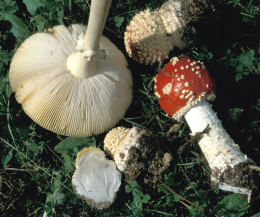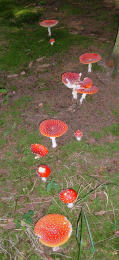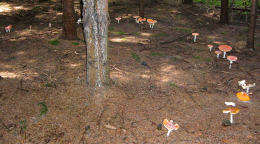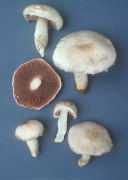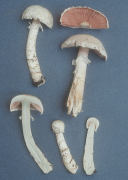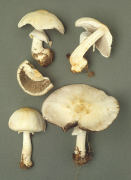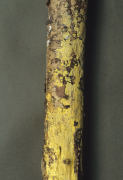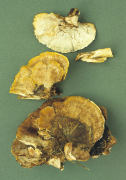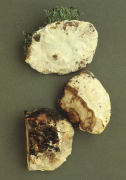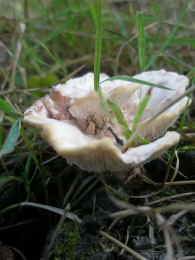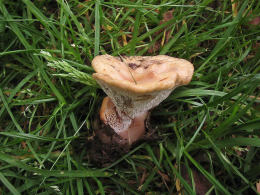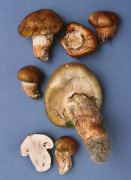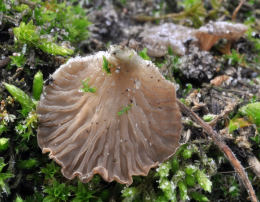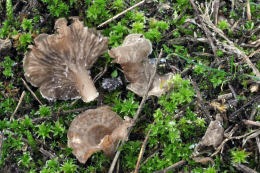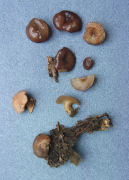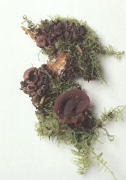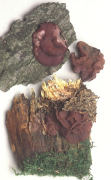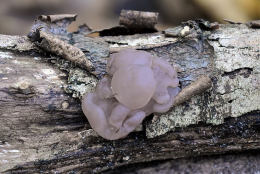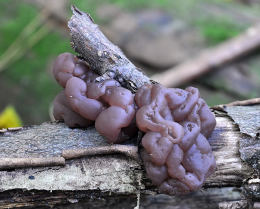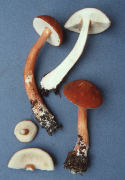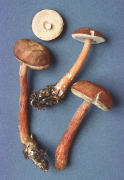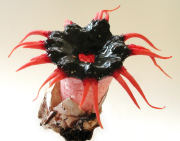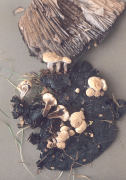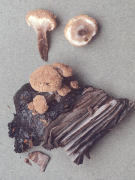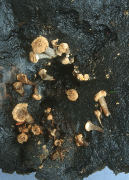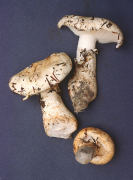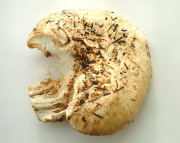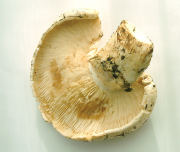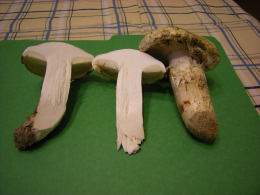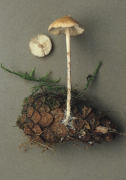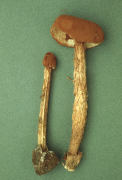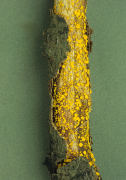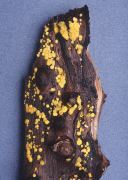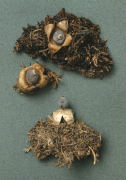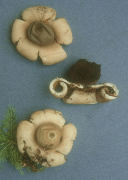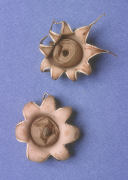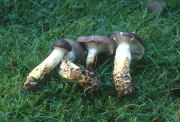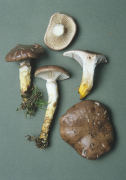Η μανιταρογνωσία και η μανιταροφιλία στην Ελλάδα και την Κύπρο Οι όροι «μύκης» και «μυκ(ητ)ολογιά» (mycοlοgy) που χρησιμοποιούνται διεθνώς, είναι ελληνικοί. Παραφθορά της ελληνικής λέξης «σπόγγος» είναι επίσης και ο όρος “fungus” (και “fungi”, “funghi” ή “hongos”). Η ύπαρξη δεκάδων λαϊκών ονομασιών, δοξασιών, μύθων και παροιμιών σε όλες σχεδόν τις περιοχές της Ελλάδας, της Κύπρου και του Πόντου υποδηλώνει τη σχέση των Ελλήνων με τα μανιτάρια. Φαίνεται μάλιστα ότι σε αρκετές περιοχές της Μακεδονίας (Γρεβενά, Κοζάνη, Καστοριά, Φλώρινα, Πέλλα, Κιλκίς, Χαλκιδική, Θάσο), της Θράκης, των νησιών (ιδιαίτερα του Ανατολικού Αιγαίου και της Κρήτης), της Πελοποννήσου, της Στερεάς Ελλάδας (Αττική, Εύβοια, Ευρυτανία, Φωκίδα), της Θεσσαλίας (Πήλιο, Περτούλι) και της Ηπείρου (Ζαγοροχώρια), τα μανιτάρια αποτελούν ή αποτελούσαν στο πρόσφατο παρελθόν ένα σημαντικό κομμάτι της ενασχόλησης και της διατροφής των κατοίκων. Ενδεικτικές είναι και οι ονομασίες τόσο του χωριού Μανιτάρι στο νομό Σερρών, χωριό που σήμερα βρίσκεται στο βυθό της μεσοπολεμικής Λίμνης της Κερκίνης, όσο και των χωριών Γκρίμποβο και Γκρίμπιανη στο νομό Ιωαννίνων, που σημαίνουν Μανιταρότοπος, αφού gribο στα σλαβικά σημαίνει μανιτάρι (Νasmer: «Die Slaven Griechenland»). Τόσο στη Μακεδονία όσο και στη Θράκη, την Ήπειρο, το Πήλιο, τη Λέσβο, την Κρήτη και την Κύπρο, διεξάγεται περιοδικά και εμπόριο σε μικρή κλίμακα. Ο κύριος όγκος των μανιταριών που συγκεντρώνεται από τους εμπόρους ξεραίνεται, καταψύχεται, κονσερβοποιείται, μεταποιείται, συσκευάζεται και τροφοδοτεί τις αγορές της Ελλάδας και της Ευρώπης. Σημαντικές ποσότητες νωπών μανιταριών αγοράζονται στη Θράκη από Τούρκους εμπόρους και στην Ήπειρο από Ιταλούς, ενώ ιδιαίτερο ενδιαφέρον για τις ελληνικές αυτοφυείς τρούφες έχουν εκδηλώσει Ιταλοί επιχειρηματίες. Παράλληλα οι πρώτες καλλιέργειες τρούφας στη χώρα μας άρχισαν να παράγουν καρποφορίες (Πιερία, Αιτωλοακαρνανία), ενώ αρκετοί αγρότες επενδύουν στην καλλιέργεια της τρούφας, αφού πλέον στην χώρα μας είναι προσιτή η παροχή τεχνικής υποστήριξης, η διάθεση εμβολιασμένων δενδρυλλίων και η διάθεση εκπαιδευμένων τρουφόσκυλων. Η έλλειψη γνώσεων του αντικειμένου και η αρνητική προκατάληψη που τη συνοδεύει ήταν οι σπουδαιότεροι παράγοντες που εμπόδιζαν τους Έλληνες να ασχοληθούν μαζικά με τη συλλογή μανιταριών, αφού η άγνοια γεννά αμφιβολία, φόβο και επιφύλαξη, που ενισχύουν το ένστικτο της αυτοσυντήρησης. Ωστόσο, τα τελευταία χρόνια παρατηρείται στη χώρα μας μια έξαρση του ενδιαφέροντος για τη γνώση και τη συλλογή μανιταριών, καθώς όλο και περισσότεροι ανακαλύπτουν την εξαιρετική τους γεύση και τη συγκίνηση που προσφέρει η εμπειρία της αναζήτησης και της συλλογής τους. Προς αυτή την κατεύθυνση σημαντικό ρόλο έχει παίξει η συγκρότηση συλλόγων μανιταρόφιλων, η έκδοση οδηγών πεδίου, φυλλαδίων, αφισών και οπτικοακουστικού υλικού εκλαϊκευμένης μανιταρογνωσίας, η δημοσίευση σχετικών άρθρων σε εφημερίδες και περιοδικά, η διοργάνωση συνεδρίων, σεμιναρίων και γιορτών μανιταροφιλίας και μανιταρογνωσίας και η λειτουργία σχετικών ιστοσελίδων, με κορυφαία την www.manitari.gr, που παίζει το ρόλο του συνεκτικού ιστού των μανιταρόφιλων όλης της Ελλάδας και ώς ένα βαθμό, τον σύνδεσμο ανάμεσα σε ερασιτέχνες και επαγγελματίες μυκητολόγους. Οι Γρεβενιώτες κατέχουν επάξια τον τίτλο των πρωτοπόρων της μανιταροφιλίας και μανιταρογνωσίας και τα Γρεβενά θεωρούνται δικαίως η πρωτεύουσα των μανιταριών της Ελλάδας, αφού πρωτοστατούν στην έρευνα, την καταγραφή, την ανάδειξη και την πολύπλευρη αξιοποίησή τους. Τα μανιτάρια κατέχουν σημαντική θέση στο διαιτολόγιο και την καθημερινή ζωή των κατοίκων της περιοχής, στους καταλόγους των εστιατορίων και στα ράφια των επιχειρήσεων που εμπορεύονται τοπικά προϊόντα. Οι Γρεβενιώτες επαναφέρουν στο προσκήνιο τη μανιταρόσουπα, τη μανιταρομαγειρίτσα και τη μανιταρόπιτα. Όλοι γνωρίζουν πως όταν γίνεται λόγος για μανιτάρια τουρσί, για αποξηραμένα μανιτάρια, μανιτάρια σε λάδι, λικέρ από μανιτάρι, ζυμαρικά με μανιτάρι, παστέλι με μανιτάρι, λουκούμι με μανιτάρι και βέβαια για μανιτάρι γλυκό κουταλιού, μιλάμε για τα προϊόντα που οι γρεβενιώτικες επιχειρήσεις παράγουν («Μανιτάρι φυσικά προϊόντα», «Μανιταροπροϊόντα Γρεβενών», «Μorena») ή εμπορεύονται («Mountain Pindos», «Αυθεντικό», «Ρόδι», «ΕΠΙΛΟΓΗ»). Η μανιταρο-ταβέρνα «Αυλαίς» στα Γρεβενά έχει προσφέρει στη διάρκεια των πέντε τελευταίων ετών περισσότερα από 85 διαφορετικά είδη άγριων μανιταριών, αριθμό ρεκόρ για τη χώρα μας και ίσως και για την Ευρώπη! Και άλλες επιχειρήσεις εστίασης στα Γρεβενά έχουν προσθέσει στους καταλόγους τους και προϊόντα με μανιτάρια: «Όλα», «Αχιλλέας», «Εκάβη», «Μέντζιος», «Λυχνάρι», «Καραφάκι», “Piccolo mondo” και «Τράπεζα Γεύσεων» στα Γρεβενά, «Πυροστιά» στους Μαυραναίους, «Αετοφωλιά της Πίνδου» στον Όρλιακα, «Άρκτος» στο Πολυνέρι, «Αμαδρυάδα» στην Αλατόπετρα, “Casa la mundi” στη Σμίξη, οι ξενώνες του Μπαϊνέτα και του Μπούμπαρη στο Ζιάκα, του Παπαζήση στο Κοσμάτι, το “Venetico” στο Ταμπούρι, του Κανιά στο Μεσολούρι, το «Αγνάντι του Μπέγκα» και ο «Μότσιος» στους Φιλιππαίους, το «Βάλια Νόστρα» στη Σμίξη, το κατάστημα του Ζήση Βλαχάβα και η «Η πέρδικα» στο Σπήλαιο, ο «Πόντιος» στην Παλιουριά και ο Ταβάρας στη Σαμαρίνα. Στην Κρανιά Γρεβενών ο ξενώνας “Breati”, που σημαίνει μανιτάρι στα βλάχικα, έχει το μανιτάρι ως βασικό στοιχείο στη διακόσμηση του. Ανάλογη αν και σε μικρότερη κλίμακα είναι η κατάσταση και στην υπόλοιπη Δυτική Μακεδονία: «Ντολτσό», «Νοσταλγία» και «Αντέτι» στην Καστοριά, «Λογγάς» στο Σιδηροχώρι Καστοριάς, «Πλάτανος» στην Κοτύλη Καστοριάς, Τοτονίδης στη Βυσσινιά Καστοριάς, ταβέρνα στην Οξιά Καστοριάς, «Πλάτανος» στη Σιάτιστα Κοζάνης, «Τράτα» στην Κοζάνη, «Εν Βελβεντώ» στο Βελβεντό Κοζάνης, «Σεργιάνι» στον Πεντάλοφο Κοζάνης, «Μύριχος» στο Σισάνι Κοζάνης και «5φ» στη Φλώρινα είναι μερικά από τα καταστήματα που σερβίρουν άγρια μανιτάρια. Εκτός Δυτικής Μακεδονίας, έχουμε υπόψη το «Συμπόσιο» στα Κάτω Πεδινά Ιωαννίνων, τον «ξενώνα του Θουκιδίδη» και το κατάστημα «Στέρνα» στο Καπέσοβο Ιωαννίνων, τον ξενώνα “Primula” στα Άνω Πεδινά Ιωαννίνων, το «Κανέλα και Γαρύφαλλο» στη Βίτσα Ζαγορίου Ιωαννίνων, το «Ντοβρά» στους Ασπράγγελους Ιωαννίνων, το «Χαγιάτι» στο Αιγίνιο Πιερίας, το εστιατόριο «Αμανίτης στο Δασόκηπο» στον Ταξιάρχη Χαλκιδικής, την ταβέρνα «Μπακατσιάνος» στην Αρναία Χαλκιδικής, τον «Πύργο Μαντάνια» στον Ασπροπόταμο Τρικάλων, τον ξενώνα “Amanita” στο Πήλιο Μαγνησίας και το εστιατόριο «Ήταν καιρός» στον Πύργο του Διρού στη Μάνη. Αναζητώντας πληροφορίες στο διαδίκτυο (timeoutcyprus.com) βρήκα δύο εστιατόρια στη Λεμεσό της Κύπρου («Σκουρουβίννος» και «Φόρσος») που περιλαμβάνουν στους καταλόγους τους, με την ένδειξη «εποχικά», και πιάτα με άγρια μανιτάρια. Στην ίδια πηγή αναφέρεται και η ταβέρνα «Μουσικός» στο χωρίο Σωτήρα που διαθέτει και μανιτάρια της αναθρίκας (Pleurotus fuscus var. ferulae)! Η Ελλάδα, σε αντίθεση με τις προηγμένες χώρες της Ευρωπαϊκής Ένωσης, στερείται της σχετικής νομοθεσίας που θα ρυθμίζει τη διαχείριση των άγριων μανιταριών ως φυσικό πόρο και θα εξασφαλίζει τη διατήρηση των ειδών και την αειφορία τους. |
